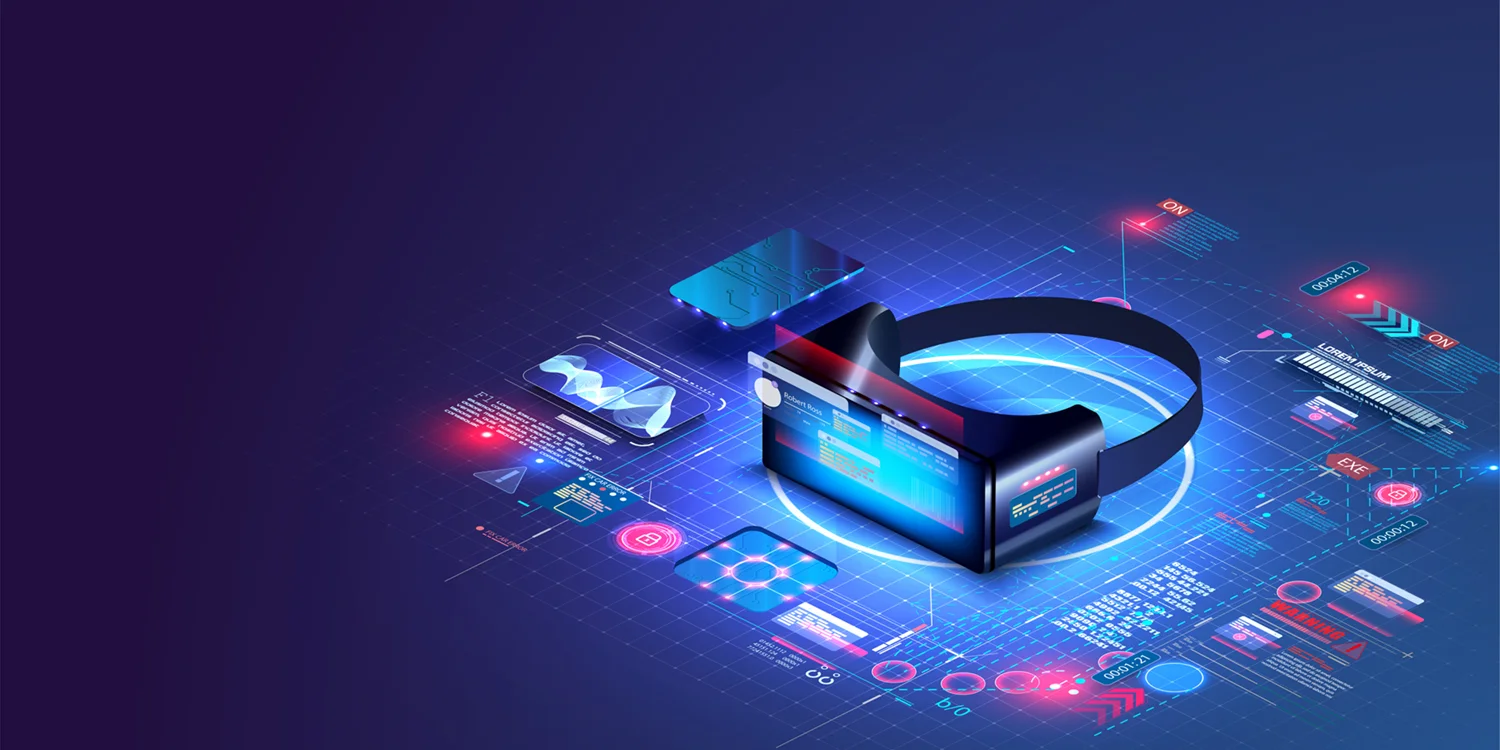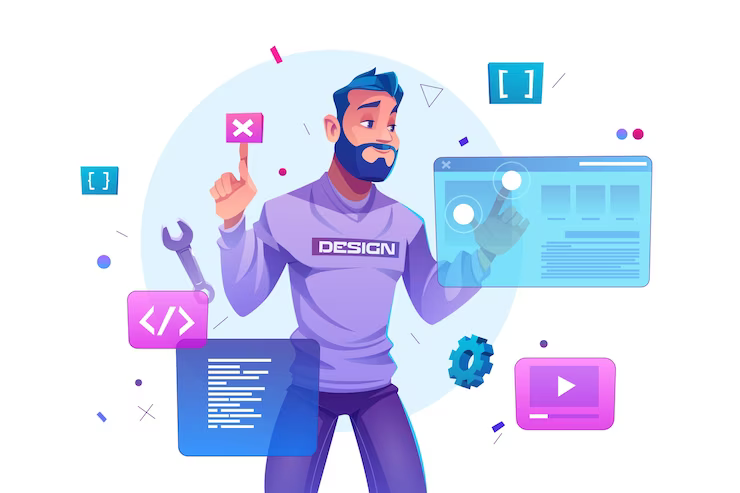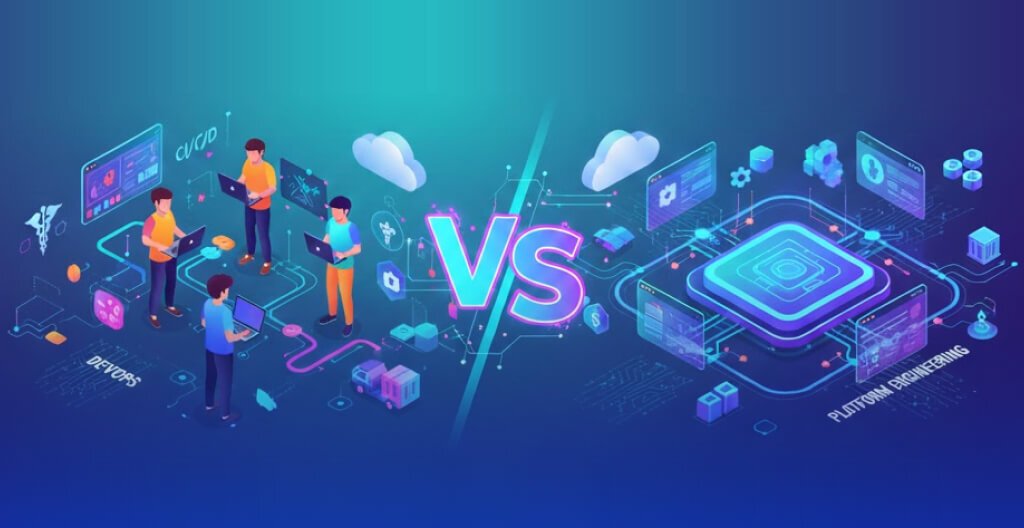Staying up-to-date with the latest tech trends and novel techniques to improving user experiences is practically impossible in the ever-changing world of technology. Our essay today will go into the upcoming trends in web development. To create web apps that stand out from the crowd and provide outstanding user experiences, we’ll take a look at how these trends might help.
The ability of PWAs to provide an experience similar to that of a native app in a web context is causing them to skyrocket in popularity in the next year.
Table of Content
Progressive Web Apps (PWAs)
Progressive Web Applications (PWAs) are gaining popularity for delivering a native app-like experience in a web environment. Built with technologies like JavaScript, CSS, and HTML, PWAs work across both desktop and mobile browsers, offering speed, reliability, and engagement similar to native apps.
1. Main advantages of PWAs (Progressive Web Applications)
PWAs are designed to work seamlessly across all devices and operating systems, offering offline functionality by storing key webpage components locally. They also provide a cost-effective alternative to developing separate web, Android, and iOS apps, reducing development expenses by eliminating the need for multiple codebases.

2. Disadvantages of PWAs
PWAs have limitations, such as restricted access to certain device features and offline use, which should be considered. However, their growing popularity is driven by benefits like home screen installation without an app store and lower development costs.

Motion UI
PWAs have limitations, such as restricted access to device features and offline use, but they are gaining popularity for their benefits. Users can easily install them on their home screen without an app store, and they offer lower development costs.
Single-Page Applications (SPAs)
Single-page applications (SPAs) refresh content dynamically, avoiding full-page reloads. This results in faster loading times and a smoother user experience compared to traditional multi-page apps, as most content is loaded upfront.
What is the difference between a Single-Page Application and a Multi-Page Application?
The key differences between Single-Page Applications (SPAs) and Multi-Page Applications (MPAs) are in user interaction, navigation, and server interaction:
- User Interaction: SPAs dynamically update content without reloading the entire page, offering a smoother experience. MPAs reload the page with each interaction, potentially slowing down the experience.
- Page Navigation: SPAs replace sections of content within a single page, making navigation faster. MPAs require full-page reloads for each new request, which can be slower.
- Loading Content: SPAs load most resources upfront, then retrieve data asynchronously, while MPAs fetch new pages from the server with every request, increasing load times.
- Server Interaction: SPAs use client-side JavaScript frameworks and APIs for data management, while MPAs rely more on server-side processing, sending new HTML pages with each interaction.
SPAs offer a more dynamic, responsive experience, while MPAs follow a traditional page-by-page approach.
AR (Augmented Reality) and VR (Virtual Reality)
As a result of the revolutionary effects of interactive and immersive technology, the way we engage with the environment has changed. As the Metaverse takes shape, you may take advantage of these trends and improve your website by using these state-of-the-art technologies.
What is VR and AR? And what is the difference between VR and AR?
Virtual reality (VR) is a technology that allows users to interact with computer-generated, simulated three-dimensional (3D) visual or sensory environments. Virtual reality (VR) integration in web apps can provide consumers with engaging and immersive experiences.
In this type of experience, you might find:
- Websites that put you in a 3D world and let you explore and interact with it using a virtual reality headset.
- Tours that allow users to virtually explore different places.
- Virtual beauty and apparel try-on sessions.
- Investigating architectural renderings, landmarks, or hotel rooms in three dimensions.
Augmented reality (AR) enhances the real world with digital elements like visuals and audio, viewable through smartphones. In contrast, virtual reality (VR) immerses users in entirely virtual environments using gear like headsets. For integrating VR or AR into web apps, developer Mozilla provides the WebXR API, which simplifies interaction with immersive technologies, making it easier to implement these experiences.
AI Chatbots
Customers crave personalized attention and tailored promotions. To meet these expectations, businesses use personalized emails, exclusive discounts, and AI-driven strategies. A 2023 Statista study reveals that 92% of companies are leveraging AI for personalization, with 80% of business leaders noting increased customer spending with personalized experiences. AI chatbots, using machine learning and natural language processing, enhance user interactions by providing accurate and responsive answers.
Artificial Intelligence (AI)
Artificial Intelligence, once a futuristic concept, is now integral to web development and beyond. Its growing popularity is driven by its potential to enhance sales and personalization. AI algorithms analyze user data to offer tailored experiences, such as personalized content, product recommendations, and custom interfaces based on individual preferences and behaviors.
What AI tools are available to enhance user experience and prove beneficial for users?
Here are a few interesting resources you might want to check out:
- Segment: Uses AI to unify and aggregate user data for personalized customer engagement.
- Dynamic Yield: Offers AI-driven personalization for tailored content, offers, and product suggestions.
- Rich Relevance: Provides AI-powered personalization specifically for e-commerce, delivering customized content and recommendations.
Blockchain
Blockchain technology is vital in web development, with the market expected to grow from $10.02 billion in 2022 to $85.7 billion by 2030, at a CAGR of 87.7%. Its popularity stems from its tamper-proof data storage and immutable ledger, ensuring secure and transparent transactions. Blockchain’s encryption and data chunking make it ideal for safeguarding sensitive information and protecting against breaches.
Voice User Interfaces (VUI)
When people talk to their phones, laptops, or other electronic devices, it’s called a voice user interface (VUI). Users can speak to the system instead of using the more conventional ways of input, such as clicking or typing. Voice user interfaces (VUIs) reply to user requests with synthesized speech or audio feedback after using speech recognition technology to comprehend and interpret the user’s intent. Smartphones, smart speakers, virtual assistants, and automobile systems all feature these interfaces, which allow consumers to engage with the devices naturally and effortlessly.
- As of 2023, the total number of active voice assistant devices in circulation stands at 4.2 billion. Furthermore, it is projected that by 2024, the global inventory of active voice assistant devices will have doubled, amounting to 8.4 billion units. Perhaps it sounds remarkable to you.
- Currently, 27% of Google App searches are conducted via voice.
- Voice search generates sales in excess of $2 billion; incorporating voice search optimization into your business strategy will increase sales and revenue.

How to implement Voice User Interfaces (VUIs)?
- Identify Use Cases: List ways your app or device can benefit from a Voice User Interface (VUI) and identify areas where voice control can improve usability.
- Choose a Framework: Select a platform for VUI development, such as Microsoft Azure Speech Services, Google Assistant Actions, Amazon Alexa Skills Kit, or open-source options like Mozilla Deep Speech.
- Design Dialogues: Create simple, clear conversational flows and dialogue scripts for user interactions. Use speech recognition technologies to process and understand user input.
- Implement Business Logic: Develop code to handle user requests, interact with external services, and manage data as needed.
- Add Speech Responses: Use text-to-speech (TTS) technology to generate audio replies for user feedback.
- Test and Iterate: Thoroughly test the VUI for functionality and user experience. Gather feedback, make improvements, and monitor performance to refine and optimize the interface.
Summing Up!
Web development trends shouldn’t scare you. Accept them instead as helpful resources that will make our life easier. In response to the ever-changing demands of consumers and companies alike, these tendencies point the way toward web experiences that are more engaging, productive, and easy to use by incorporating cutting-edge technology. We at Hutech have started using a few of these trends, and we can say with certainty that they can take your company to the next level. Not only will they provide your website a more contemporary look and feel, but they will also keep your company competitive and current in the digital world.
Are you in need of a trustworthy development business to overhaul the look and functionality of your website, making it more modern and eye-catching? If you would like a no-obligation consultation and project estimate from our development team, please contact us.
Frequently Asked Questions
1) How do PWAs improve user experience and engagement?
PWAs enhance user experience by offering fast loading speeds, even on slow networks, and providing seamless navigation. With features like push notifications, PWAs can re-engage users, encouraging them to return to the app. Additionally, PWAs can be installed on users’ devices, allowing for easy access without the need to visit an app store.
2) What are the cost implications of developing and maintaining a PWA for a business?
Developing a PWA can be cost-effective compared to building separate native apps for different platforms. PWAs leverage existing web technologies and can be developed using a single codebase, reducing development time and costs. Additionally, maintenance costs are typically lower as updates can be deployed instantly without requiring users to download new versions.
3) How do PWAs contribute to increased conversions and sales for businesses?
PWAs offer a smooth and frictionless user experience, leading to higher conversion rates. With features like offline access, users can continue browsing and making purchases even when they’re offline or on unstable connections. Additionally, push notifications can prompt users to take action, such as completing a purchase or revisiting the app to explore new offerings.
4) What are the SEO benefits of implementing a PWA for a business website?
PWAs are built using standard web technologies and are fully crawlable by search engines, which can improve the website’s visibility and search rankings. Additionally, PWAs offer fast loading times and responsive design, factors that are important for SEO. By providing a better user experience, PWAs can contribute to lower bounce rates and higher user engagement, further enhancing SEO performance.
Ready to Advance your Digital Transformation?Get in touch with us.
Discover why Hutech is the right partner for your business.
MAIL US AT
sales@hutechsolutions.com
CONTACT NUMBER
+91 90351 80487
CHAT VIA WHATSAPP
+91 90351 80487
Humantech Solutions India Pvt. Ltd 163, 1st Floor, 9th Main Rd, Sector 6, HSR Layout, Bengaluru, Karnataka 560102


